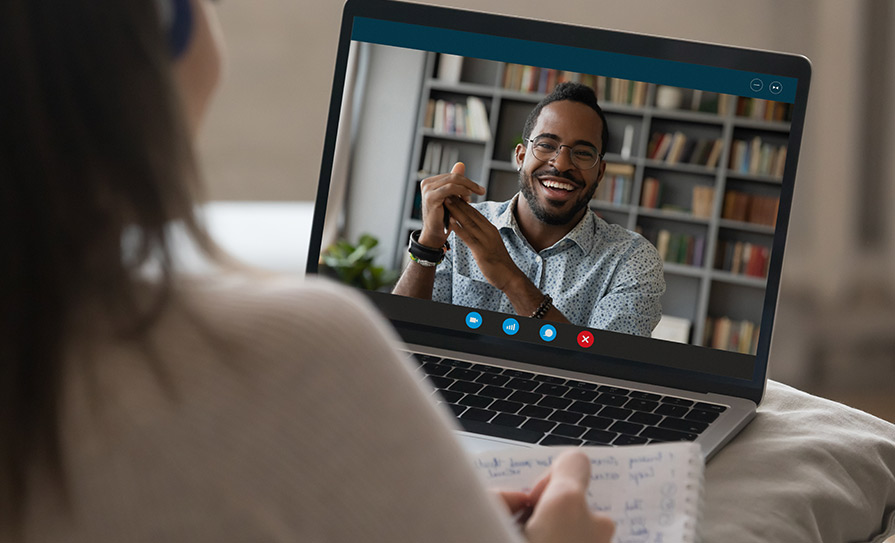
In carrying out remote consultations, we need to be careful what our patients see in our video background
With Zoom calls now ubiquitous, have you noticed how people are taking more care with the backgrounds their cameras show the world? The blurring of backgrounds seems quite common, although it’s not very attractive. I have looked at some spectacular vistas that must have come from high quality National Geographic photos; recently a background showing the Long Room library in Trinity College caught my attention.
However, something that catches your attention, even if a pleasant experience, means your attention is not on the person who is talking. For those of us who carry out remote consultations, we need to be careful what our patients see in our video background. And while it has become something of a trope at this stage, the scenario in which an older person says they cannot possibly trust a doctor who has dead plants in their Zoom background is a warning of the pitfalls of remote technology.
Telehealth has become a central part of modern healthcare. Remote consulting is common in mental healthcare, minor illness, and chronic disease management. It is especially suited to repeat outpatient visits.
“A background has measurable impact on patients’ telehealth experiences, which suggests a need for careful selection and design,” Dr Morgan Stosic (PhD), a social psychologist and researcher at the University of Maine, US, told Medscape recently.
Stosic is the author of a study published in in 2022, that found certain videoconferencing elements can help doctors convey more warmth, such as family photos and framed degrees which convey competence. Other elements, however, such as artwork may distract patients and compromise the recall of clinical information.
Separate research carried out at Durham University, and published in PLOS One last September, examined the impact of six different Zoom backgrounds on viewer perceptions of trust and competency. Backgrounds with books and (non-dying!) house plants engendered the most trust and competency, while backdrops with home living spaces and novelty items encouraged the least.
“First impressions are formed instantly,” the Durham researchers wrote. “Within the first few seconds of meeting someone, we spontaneously draw inferences about their character traits.” Online, these inferences are influenced by the environment the person is in.
To help doctors through a potential minefield Medscape spoke with practising clinicians, telehealth trainers, and researchers. Here are some of their tips for progressing from a good bedside manner to an effective ‘webside’ one.
Blurred, virtual, or real?: Dr Erin Hulfish, the Director of Telehealth Education at the Renaissance School of Medicine at Stony Brook University, New York, US, advises against blurred or virtual backgrounds.
“Those backgrounds can lead to a sense of mistrust,” she said. “Patients could think there’s somebody else in the room or wonder what is being hidden. They may worry about privacy and not speak honestly.”
Books: Literacy is generally associated with intelligence and academic performance. The Durham researchers found having medical books on a shelf can make you appear smart and competent. But be careful with visible book titles that are potentially off-putting, especially non-medical titles that may portray your quirky personal interests.
Plants: As someone with ‘black’ rather than ‘green’ fingers I am not in favour of a dead plant background. But if you are an accomplished horticulturist, then according to the Durham study, background greenery promoted feelings of competence and trustworthiness for patients.
Artwork: I have a lovely old Admiralty map of Lough Corrib on the wall behind me; however in general, artwork of all types appears distracting and should be avoided, according to the experts.
Novelty items: Ironically, it seems the more viewers like a doctor’s background, the less likely they are to remember clinical information. So the aim is not to distract patients and to keep the focus on you. A blown-up selfie picture of you with your favourite rock star is probably best avoided.
Mobile phone: Mobile phones are best kept silent and out of the picture. You may be tempted to glance at texts or notifications, giving your patient the impression you are not fully focused on them.
Pets: A GP who practised in our area several generations ago reportedly consulted with her pet spaniel at her feet. I wonder what her patients made of that? The expert advice, which seems reasonable, is for doctors to avoid having pets in their telemedicine consultations.
Have you had any unexpected reactions to your consulting background in this new era of telemedicine? If so, we’d love to hear your stories at @med_indonews.





Leave a Reply
You must be logged in to post a comment.